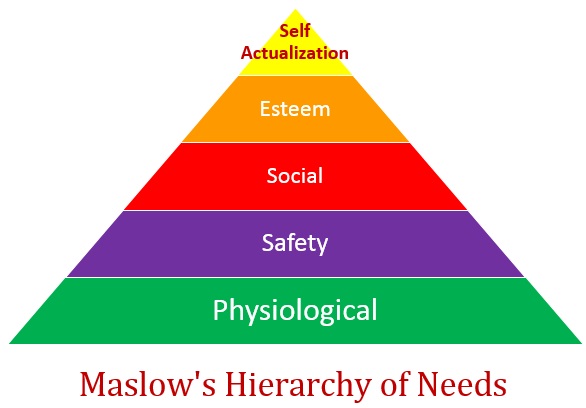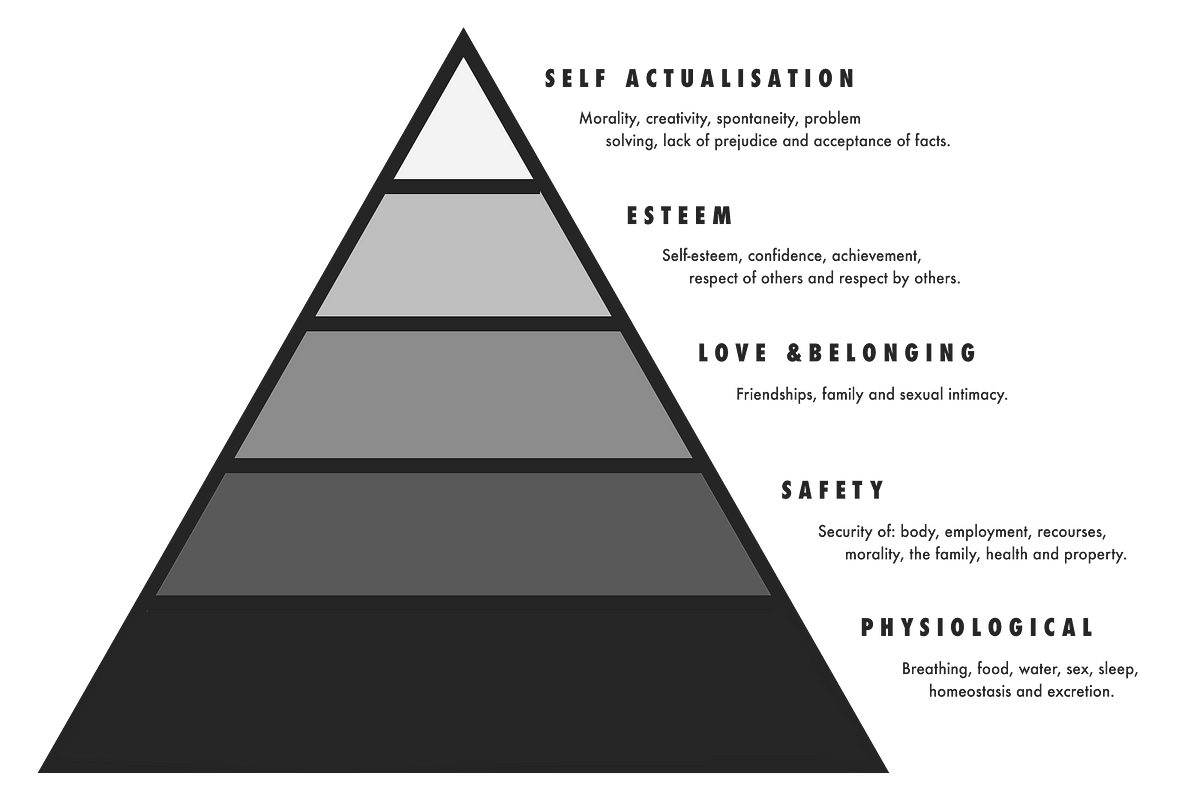Abraham Maslow's hierarchy of needs is a theory in psychology that suggests that individuals have certain basic needs that must be met in order for them to achieve self-actualization, or the realization of their full potential. According to Maslow, these needs are arranged in a hierarchy, with the most basic needs at the bottom and the need for self-actualization at the top.
The first level of Maslow's hierarchy of needs consists of physiological needs, which include basic needs such as food, water, and shelter. These needs must be met in order for an individual to survive.
The second level of the hierarchy consists of safety needs, which include the need for security and protection from physical and emotional harm. This level also includes the need for stability and structure in one's environment.
The third level of the hierarchy is social needs, which include the need for love, belonging, and companionship. This level is characterized by a desire for friendships, relationships, and a sense of community.
The fourth level is esteem needs, which include the need for self-esteem, respect from others, and a sense of accomplishment. This level is characterized by a desire for recognition, status, and a sense of accomplishment.
The fifth and final level of Maslow's hierarchy is self-actualization, which refers to the realization of one's full potential and the desire to become the best version of oneself. This level is characterized by a desire for personal growth and self-fulfillment.
Maslow's hierarchy of needs is often depicted as a pyramid, with the basic needs at the bottom and self-actualization at the top. The idea behind this hierarchy is that individuals must satisfy each level of needs in order to progress to the next level. In other words, an individual cannot achieve self-actualization if their basic physiological and safety needs are not met.
Maslow's hierarchy of needs has had a significant impact on the field of psychology and has influenced the development of various theories and approaches to understanding human motivation and behavior. It is often used as a framework for understanding and addressing the needs of individuals in various settings, including education, work, and healthcare.
Overall, Maslow's hierarchy of needs provides a useful model for understanding the complex and multi-faceted nature of human needs and motivation. It helps to shed light on the various factors that drive and influence our behavior, and it serves as a helpful guide for addressing and meeting the needs of individuals in a variety of contexts.







